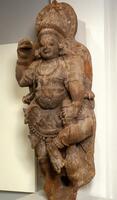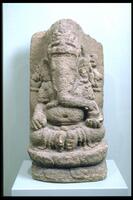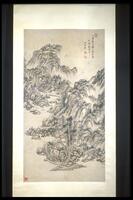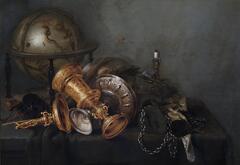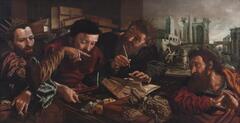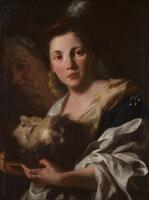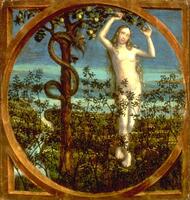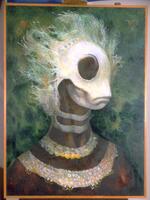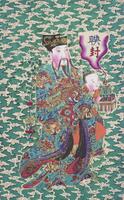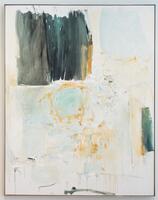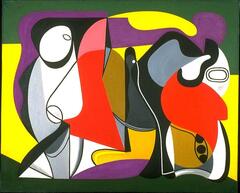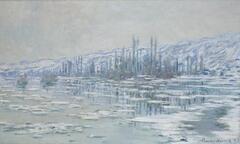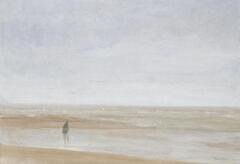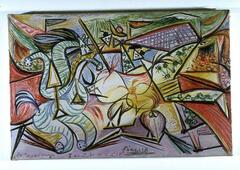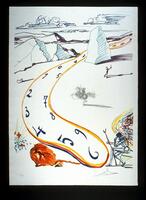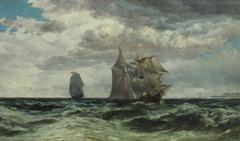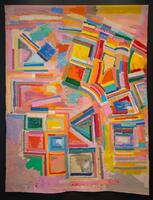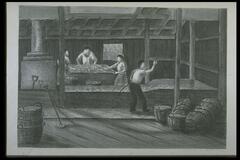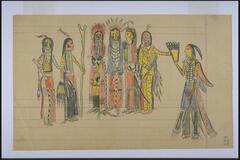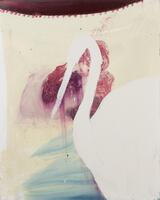40 Items in this Learning Collection
Collection Object
Collection Object
Collection Object
Collection Object
Collection Object
Collection Object
Collection Object
Collection Object
Collection Object
Collection Object
Collection Object
Collection Object
Collection Object
Collection Object
Collection Object
Collection Object
Collection Object
Collection Object
Collection Object
Collection Object
Collection Object
Collection Object
Collection Object
Collection Object
Collection Object
Collection Object
Collection Object
Collection Object
Collection Object
Collection Object
Collection Object
Collection Object
Collection Object
Resource with 3 media
Collection Object
Collection Object
Collection Object
Copyright
All Rights Reserved
()
Judith with the Head of Holofernes
Accession Number
1996/2.16
Title
Judith with the Head of Holofernes
Artist(s)
Gaspare Traversi
Object Creation Date
circa 1760
Medium & Support
oil on canvas
Dimensions
33 3/8 in x 27 1/2 in (84.77 cm x 69.85 cm);33 3/8 in x 27 1/2 in x 1 3/4 in (84.77 cm x 69.85 cm x 4.45 cm)
Credit Line
Gift of the Friends of the Museum of Art in Honor of the Museum's Fiftieth Anniversary
Label copy
March 28, 2009
This painting is a sensitive character study straddling the line between religious narrative and portrait. The subject of the painting is the Old Testament story of the Jewish heroine Judith who saved her people by slaying the Assyrian general Holofernes, seducing him until he fell asleep drunk and then beheading him in his own bed. Traversi seems fascinated by his striking model, playing down aspects of the story that would detract from the viewer’s focus on her. The painting may have been commissioned by a Roman or Neapolitan patron who wished to be portrayed in the guise of Judith, or perhaps Judith was a model whose compelling appearance appealed to Traversi.
The lack of specific narrative detail has led some scholars to suggest the subject might in fact be the New Testament story of Salome who, on the advice of her mother, demanded the head of St. John the Baptist. Rather than depicting a moment of action, Traversi chose to show the figure reacting to what has just happened, displaying a depth and complexity of emotion that is a mixture of pride, ruefulness, and strength, which suggests the subject is Judith rather than Salome, who is usually portrayed as passive or pliant.
Subject matter
This painting by the eighteenth-century Neapolitan artist Gaspare Traversi is a sensitive character study, straddling the line between religious narrative and portrait. Shown here is a beautiful woman dressed in finery, who cradles the head of a decapitated man on a charger, or platter. Emerging from the darkness behind her appears the head of an old woman, her wrinkled visage a foil to the younger woman’s youth and allure. The painter’s indications of subject matter are bare to the extreme, playing on the slipperiness of the related manners of representing two biblical characters, Judith and Salome, both of whom have been suggested as the subject of this work.
The Jewish heroine Judith of the Old Testament apocrypha was a virtuous widow who saved her besieged people by seducing the Assyrian general Holofernes, successfully repulsing his amorous advances until he fell asleep drunk. Seizing his sword, Judith chopped off her enemy’s head. The New Testament personage Salome danced so well for her stepfather Herod that he offered to give her anything she wanted. Upon the advice of her mother Herodias, the young woman demanded the head of St. John the Baptist, whereupon an executioner decapitated the saint. While both Judith and Salome may be shown holding the severed head on a charger, only Judith is shown with a sword. The absence of this instrument in the Museum’s image creates an ambiguity inducing us to tease out the meaning of this picture.
Rather than depicting a moment of action, Traversi chose to show the figure reacting to what has just happened. The complexity of feelings evoked by the subject’s face—a mixture of pride, ruefulness, and strength—argues in favor of Judith. Salome, who merely carried out her mother’s wishes, is usually portrayed as passive or pliant, and rarely with any depth of emotions. The narrative context allowed the artist to give to this portrait of an obviously charming model an intriguing psychosexual dimension.
Traversi settled in Rome in 1752, where he seems to have lived for the rest of his life, though he apparently worked for patrons in that city and in Naples. Our painting may have been commissioned by a Roman or Neapolitan patron who wished to be portrayed in the guise of Judith, in the tradition of the identification, or disguised, portrait, in which qualities associated with a biblical figure carry over to the contemporary person depicted. Or the woman portrayed may simply be a model whose compelling appearance made Traversi want to record her as a character study, much in the manner of his genre scenes featuring interesting people from a range of social classes. In any case, it must have been Judith’s combination of virtue, will, and eroticism that appealed both to the patron or model and to the artist.
This painting’s power to fascinate made it a most suitable gift to honor the Museum on the occasion of its fiftieth anniversary.
Annette Dixon, Curator of Western Art
A Closer Look, 1996
Physical Description
The half-length figure of a woman looks directly out of the painting and holds the bearded head of a man on a platter in her hands. She wears a fine robe with large white sleeves and collar, a soft hat with a small white feather, and a bejeweled pin on her left shoulder. The face of an older woman with deeply wrinkled skin appears in the shadows behind her.
Primary Object Classification
Painting
Primary Object Type
portrait
Collection Area
Western
Rights
If you are interested in using an image for a publication, please visit http://umma.umich.edu/request-image for more information and to fill out the online Image Rights and Reproductions Request Form.
Keywords
half figures
heads (animal components)
oil paintings (visual works)
platters
servants
1996/2.16
Title
Judith with the Head of Holofernes
Artist(s)
Gaspare Traversi
Object Creation Date
circa 1760
Medium & Support
oil on canvas
Dimensions
33 3/8 in x 27 1/2 in (84.77 cm x 69.85 cm);33 3/8 in x 27 1/2 in x 1 3/4 in (84.77 cm x 69.85 cm x 4.45 cm)
Credit Line
Gift of the Friends of the Museum of Art in Honor of the Museum's Fiftieth Anniversary
Label copy
March 28, 2009
This painting is a sensitive character study straddling the line between religious narrative and portrait. The subject of the painting is the Old Testament story of the Jewish heroine Judith who saved her people by slaying the Assyrian general Holofernes, seducing him until he fell asleep drunk and then beheading him in his own bed. Traversi seems fascinated by his striking model, playing down aspects of the story that would detract from the viewer’s focus on her. The painting may have been commissioned by a Roman or Neapolitan patron who wished to be portrayed in the guise of Judith, or perhaps Judith was a model whose compelling appearance appealed to Traversi.
The lack of specific narrative detail has led some scholars to suggest the subject might in fact be the New Testament story of Salome who, on the advice of her mother, demanded the head of St. John the Baptist. Rather than depicting a moment of action, Traversi chose to show the figure reacting to what has just happened, displaying a depth and complexity of emotion that is a mixture of pride, ruefulness, and strength, which suggests the subject is Judith rather than Salome, who is usually portrayed as passive or pliant.
Subject matter
This painting by the eighteenth-century Neapolitan artist Gaspare Traversi is a sensitive character study, straddling the line between religious narrative and portrait. Shown here is a beautiful woman dressed in finery, who cradles the head of a decapitated man on a charger, or platter. Emerging from the darkness behind her appears the head of an old woman, her wrinkled visage a foil to the younger woman’s youth and allure. The painter’s indications of subject matter are bare to the extreme, playing on the slipperiness of the related manners of representing two biblical characters, Judith and Salome, both of whom have been suggested as the subject of this work.
The Jewish heroine Judith of the Old Testament apocrypha was a virtuous widow who saved her besieged people by seducing the Assyrian general Holofernes, successfully repulsing his amorous advances until he fell asleep drunk. Seizing his sword, Judith chopped off her enemy’s head. The New Testament personage Salome danced so well for her stepfather Herod that he offered to give her anything she wanted. Upon the advice of her mother Herodias, the young woman demanded the head of St. John the Baptist, whereupon an executioner decapitated the saint. While both Judith and Salome may be shown holding the severed head on a charger, only Judith is shown with a sword. The absence of this instrument in the Museum’s image creates an ambiguity inducing us to tease out the meaning of this picture.
Rather than depicting a moment of action, Traversi chose to show the figure reacting to what has just happened. The complexity of feelings evoked by the subject’s face—a mixture of pride, ruefulness, and strength—argues in favor of Judith. Salome, who merely carried out her mother’s wishes, is usually portrayed as passive or pliant, and rarely with any depth of emotions. The narrative context allowed the artist to give to this portrait of an obviously charming model an intriguing psychosexual dimension.
Traversi settled in Rome in 1752, where he seems to have lived for the rest of his life, though he apparently worked for patrons in that city and in Naples. Our painting may have been commissioned by a Roman or Neapolitan patron who wished to be portrayed in the guise of Judith, in the tradition of the identification, or disguised, portrait, in which qualities associated with a biblical figure carry over to the contemporary person depicted. Or the woman portrayed may simply be a model whose compelling appearance made Traversi want to record her as a character study, much in the manner of his genre scenes featuring interesting people from a range of social classes. In any case, it must have been Judith’s combination of virtue, will, and eroticism that appealed both to the patron or model and to the artist.
This painting’s power to fascinate made it a most suitable gift to honor the Museum on the occasion of its fiftieth anniversary.
Annette Dixon, Curator of Western Art
A Closer Look, 1996
Physical Description
The half-length figure of a woman looks directly out of the painting and holds the bearded head of a man on a platter in her hands. She wears a fine robe with large white sleeves and collar, a soft hat with a small white feather, and a bejeweled pin on her left shoulder. The face of an older woman with deeply wrinkled skin appears in the shadows behind her.
Primary Object Classification
Painting
Primary Object Type
portrait
Collection Area
Western
Rights
If you are interested in using an image for a publication, please visit http://umma.umich.edu/request-image for more information and to fill out the online Image Rights and Reproductions Request Form.
Keywords
half figures
heads (animal components)
oil paintings (visual works)
platters
servants

